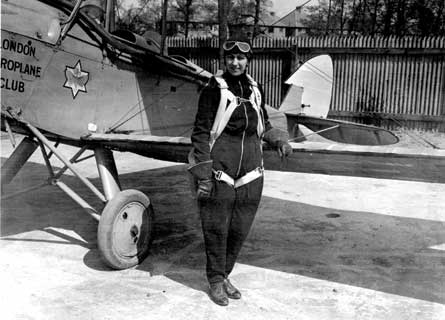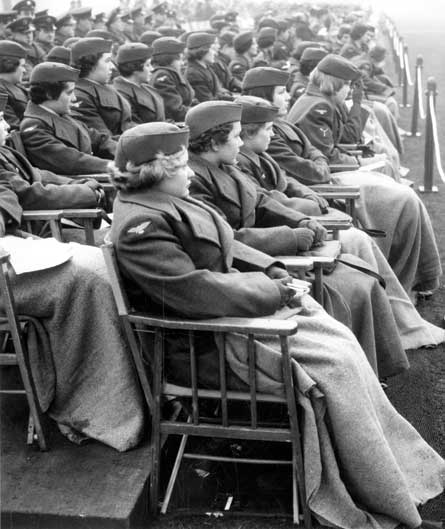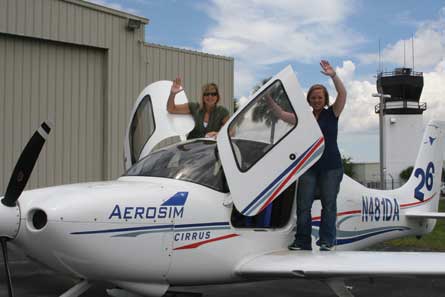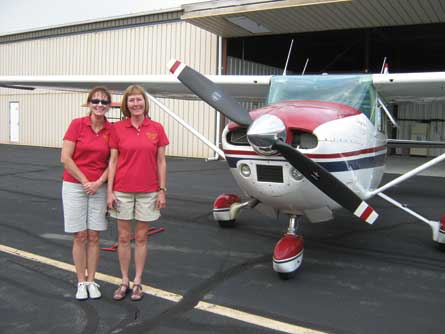Most 88-year-olds have a different idea of a vacation than pilot Dottie Anderson's but "vacation" is what she, in her Piper PA28-181 Archer, called her 33rd entry in the female-only Air Race Classic (ARC) of late June.
An all-daylight, VFR event, the ARC typically covers about 2,400mi at an altitude of about 8,000ft during four days, with up to eight control stops for landing or fly-by.
However, because of weather concerns in the northern Midwest, this year's race was shortened from 10 legs to five. The race's start point - Iowa City, Iowa - shifted to Alliance, Nebraska and it ended in Mobile, Alabama.
The victors, not named until the final two-person team had landed, were determined by their overall time within their handicap.
More broadly, the ARC battles an enduring "handicap" for women pilots in general. Aviation remains to some extent "a good old boys' network", say pilots Lynn Penderville and Jayne Collins, who made their ARC debut this year in a borrowed 1976 Cessna 182.
 |
|---|
Pioneering aviator Amy Johnson |
A pilot for 20-plus years, Penderville began her aviation career watching others fly. As a chief flight attendant she spent much of her time in commercial jet cockpits, chatting to pilots and learning about aircraft operations.
Noticing her questions, a pilot encouraged her to pursue her own licence. "I didn't know any women who flew," Penderville recalls.
In 2010, the FAA estimated the number of female private pilots in the USA at 14,000, compared with 188,000 male pilots, giving a ratio of 13:1. For commercial pilot licences, and for flight instructors, the ratio is 14:1.
Penderville is used to being one of very few women at industry events. She says it is a rare and "overwhelming" treat for "women to talk aviation with women" at the ARC.
She and Collins - who work for Leesburg, Virginia-based flight school AV-ED - say many are unaware that women make "excellent" pilots, particularly because of their habitual precision and aptitude for multitasking.
Penderville says women are more likely than men to assume they do not have the time or money to pursue a pilot's licence, but sees the ARC as rebutting the idea that aviation cannot fit into the average woman's life.
 |
|---|
© WRAF |
A passing-out parade at RAF Cranwell |
"It doesn't take a lot of muscle, it doesn't take being a rocket scientist," Penderville insists of perceptions that aviation is an inherently physical, high-tech field, and therefore a man's realm. To her, being a pilot simply takes "desire, coordination, and love of flying".
Penderville never calls herself a female pilot, simply a pilot. Anderson, who began flying at 15, becoming a flight instructor in 1948 and a test pilot in 1978, takes a similar stance. Her advice to women worried about minority status is simple. "Be capable of what you're doing," she says, "and you won't have any trouble... I've watched girls come a long way in the flying business."
 |
|---|
© Cirrus Aircraft |
Race winners: Leah Hetzel and Sarah Morris |
However, Anderson's own life lacked the timing for a military or commercial career. "I wasn't old enough to fly in the WASPs [the World War II-era Women's Airforce Service Pilots]. And by the time commercial opportunities opened up for women, I was too old."
Fortunately, her passion was for teaching, and she has lost count of the number of pilots she has trained. In 32 ARC entries, Anderson placed in the top 10 more than half the time. This year she placed 11th. The winners were Jacksonville University team Leah Hetzel and Sarah Morris in a Cirrus SR20, the first-ever collegiate victors in the race, says Cirrus.
 |
|---|
© Alaina Mabaso |
Lynn Penderville and Jayne Collins |
Collins and Penderville placed 23rd among 43 finishing teams. As for the race's larger goal - outreach to aspiring female pilots - Penderville enjoyed meeting a female ramp worker at the Mobile airport. Watching so many women making their triumphant landings made an impression. "It really lit the fire in me to learn how to fly myself," she said.
Source: Flight International
















